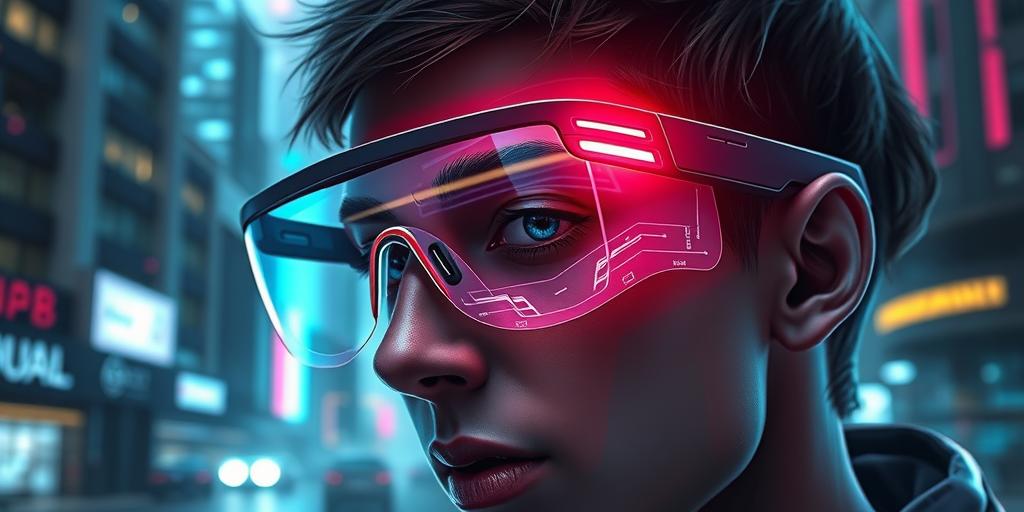Did you ever hear about Google Glass? The futuristic eyewear that promised to revolutionize how we interact with technology? While it may not have become the ubiquitous device many predicted, its legacy is far more significant than a simple market failure. Let’s explore Google Glass and its lasting impact on the tech world. Prepare to be amazed by the innovations that Google Glass birthed!
Google Glass: The Vision and Reality
Google Glass, originally launched in 2013, was ambitious. It was a wearable computer with a tiny display projecting information directly into the user’s field of vision. This hands-free interface offered a plethora of possibilities, from taking photos and videos to accessing maps and making calls. Imagine dictating emails on the go or getting real-time directions without ever touching your phone. The potential uses seemed endless. However, this utopian vision met with significant challenges. The high price point, privacy concerns, and a somewhat clunky design hindered its widespread adoption. Many people were uncomfortable with the implications of constantly recording their surroundings, while others found the device both unwieldy and conspicuous. Despite these challenges, Google Glass paved the way for many developments in wearable technology, proving that the concept itself wasn’t a failure, just the first iteration.
Challenges and Criticisms
Several factors contributed to Google Glass’s struggles. Beyond the cost, user experience was a major factor. Early versions suffered from short battery life, a limited field of view, and a somewhat cumbersome interface. Privacy issues also raised significant public concern. The constant recording functionality, though intended for convenience, was viewed by many as an invasion of privacy, sparking debates that continue to echo in discussions surrounding other wearable technologies. The device’s appearance also proved divisive, earning its users the moniker “Glassholes” due to the device’s somewhat unusual design and the perception that users were oblivious to their surroundings.
The Lasting Legacy of Google Glass
Although Google Glass failed to reach mass market success in its initial form, its impact on technological development is undeniable. The foundation it laid for augmented reality (AR) and other wearable technologies has been groundbreaking. The technology behind Google Glass is found in countless other projects, demonstrating its influence extends well beyond its initial failure. For example, many of Google Glass’s features are now commonly found in smartphone technology. Consider how many features you use daily that were once considered pioneering aspects of Google Glass. This demonstrates Google Glass’s influence persists in current technology.
Augmented Reality and Beyond
The work undertaken in developing Google Glass had a significant impact on the development of augmented reality technology. The initial attempts to integrate a heads-up display (HUD) into a wearable device provided invaluable insights and solutions that have advanced the field of AR considerably. The technology used to project information onto the user’s lens, the user interface, and even the basic concept of hands-free computing were significant steps toward the ubiquitous AR technology predicted for the future. Even the failures highlighted design elements and technological needs that have been improved upon by subsequent AR developments.
Google Glass: A Stepping Stone to the Future
Google Glass may not have revolutionized the world the way initially envisioned, but its legacy is significant. It laid the groundwork for advancements in augmented reality, paved the way for more sophisticated wearable technologies, and forced critical conversations around privacy in an increasingly connected world. Its impact extends beyond initial failures; the innovations it generated continue to evolve modern technology, shaping our daily lives in ways that were unimaginable just a decade ago. Google Glass serves as a prime example of how bold technological visions can lead to unexpected, yet impactful, consequences, paving the way for future breakthroughs. Its failure to achieve mass-market adoption shouldn’t diminish its contribution to the world of technological development.
The Future of Wearable Technology
As the technology behind Google Glass continues to develop, the future of wearable technology seems very bright. We can expect more sophisticated, sleek designs, extended battery life, and advanced features that will blur the lines between the digital and physical worlds. While Google Glass may have been a relatively early attempt at a wearable device, its contribution will long be remembered as the device that started many conversations that would shape the next decades of technological innovation. As Google Glass demonstrated, innovation isn’t always about creating perfect products, but rather about learning from what we do, and don’t, get right.
Embrace the future, and remember the lessons of Google Glass! Explore the world of wearable technology and discover what comes next!




